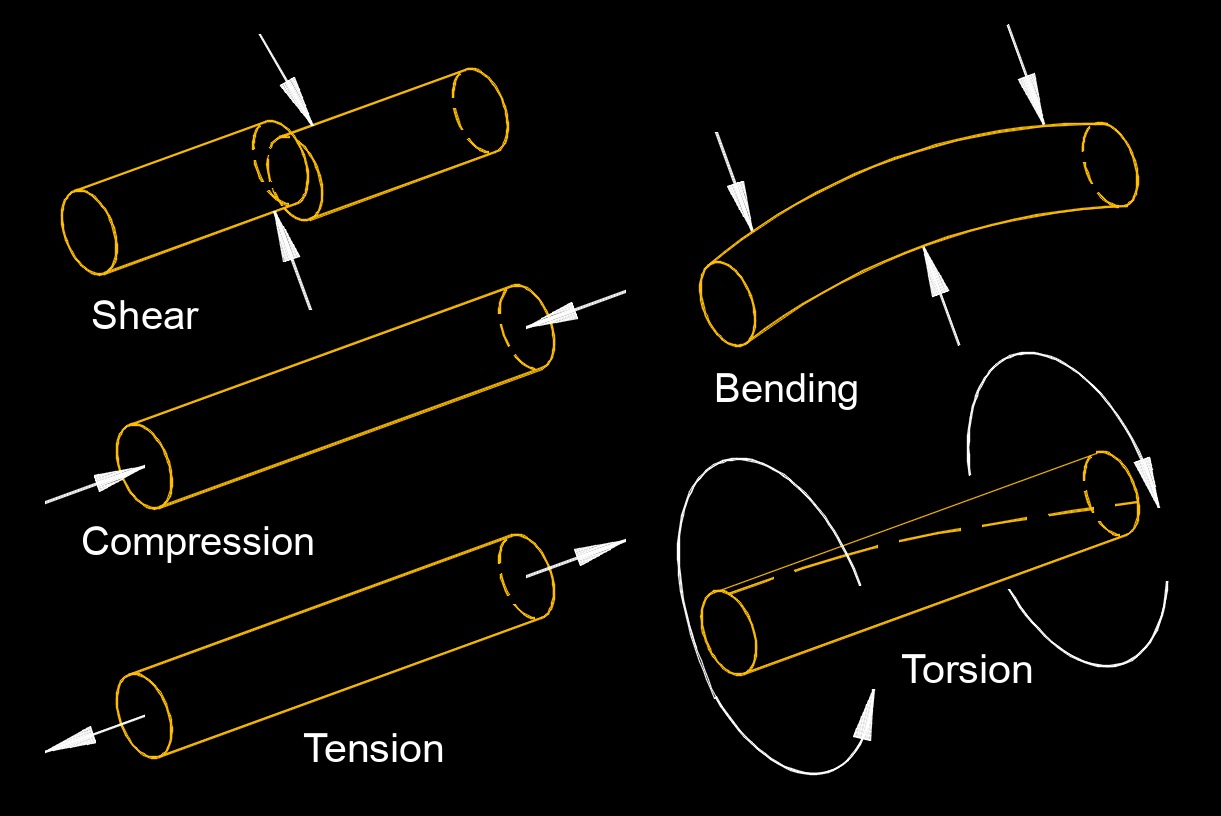 Shear is the deformation in which layers of a material slide past each other in response to parallel forces acting in opposite directions. This occurs when a force is applied tangentially or parallel to the surface of an object or material. When shear forces are applied to a solid material, it causes the material to undergo shear stress, which leads to shear deformation. The amount of shear deformation depends on factors such as the magnitude of the applied force, the material's properties (shear modulus), and the geometry of the object.
Shear is the deformation in which layers of a material slide past each other in response to parallel forces acting in opposite directions. This occurs when a force is applied tangentially or parallel to the surface of an object or material. When shear forces are applied to a solid material, it causes the material to undergo shear stress, which leads to shear deformation. The amount of shear deformation depends on factors such as the magnitude of the applied force, the material's properties (shear modulus), and the geometry of the object.
Various Physical and Engineering Applications
Material deformation - Shear deformation occurs in materials subjected to forces that cause sliding or twisting motions, such as cutting, punching, or machining processes.
Structural engineering - Shear forces can occur in structural elements like
beams, columns, and bolts, affecting their stability and load-bearing capacity. Engineers analyze shear forces to ensure that structures can withstand applied loads without failure.
Fluid mechanics - Shear is a crucial concept in
fluid dynamics, where it refers to the rate of change of velocity within a fluid. Shear forces between adjacent layers of fluid give rise to
viscosity, a measure of the fluid's resistance to flow.
Geology - Shear forces and deformation play a role in geological processes such as faulting, where rocks slide past each other along fractures in the Earth's crust.
In structural shear refers to the shear forces that act within structural elements such as beams, columns, and trusses. These shear forces arise due to various loading conditions, including gravity loads, wind loads, seismic forces, and applied loads such as those from occupants or equipment.
In structural engineering, understanding and analyzing structural shear are crucial for designing safe and stable structures. Shear forces can cause deformation or failure in structural elements if not properly accounted for in the design. The analysis of structural shear involves determining the distribution of shear forces along the length of a structural member and assessing its capacity to resist these forces.
Structural shear is typically analyzed along with other structural forces, such as axial forces (compression and tension) and bending moments. Engineers use principles of statics and structural mechanics to calculate the internal forces and stresses within a structure, considering equilibrium conditions and compatibility of deformations.
Analysis of Structural Shear
Shear Diagrams - Engineers often create shear force diagrams to visualize the distribution of shear forces along the length of a structural member. These diagrams help identify critical sections where shear forces are highest and guide the design of appropriate reinforcement or support.
Shear Capacity - Structural elements are designed to withstand shear forces without failure. Engineers calculate the shear capacity of a member based on its material properties, cross-sectional geometry, and loading conditions. Reinforcement, such as shear reinforcement in reinforced concrete beams, may be added to enhance shear capacity.
Shear Connections - In structures composed of multiple members joined together, such as beams connected to columns, proper shear connections are essential to transfer shear forces between members efficiently. Various types of shear connectors, such as
bolts,
welds, and shear studs, may be used depending on the structural configuration and loading conditions.
By analyzing and designing for structural shear, engineers ensure that buildings and other structures can safely support their intended loads and maintain stability under various conditions.

 Shear is the deformation in which layers of a material slide past each other in response to parallel forces acting in opposite directions. This occurs when a force is applied tangentially or parallel to the surface of an object or material. When shear forces are applied to a solid material, it causes the material to undergo shear stress, which leads to shear deformation. The amount of shear deformation depends on factors such as the magnitude of the applied force, the material's properties (shear modulus), and the geometry of the object.
Shear is the deformation in which layers of a material slide past each other in response to parallel forces acting in opposite directions. This occurs when a force is applied tangentially or parallel to the surface of an object or material. When shear forces are applied to a solid material, it causes the material to undergo shear stress, which leads to shear deformation. The amount of shear deformation depends on factors such as the magnitude of the applied force, the material's properties (shear modulus), and the geometry of the object.
